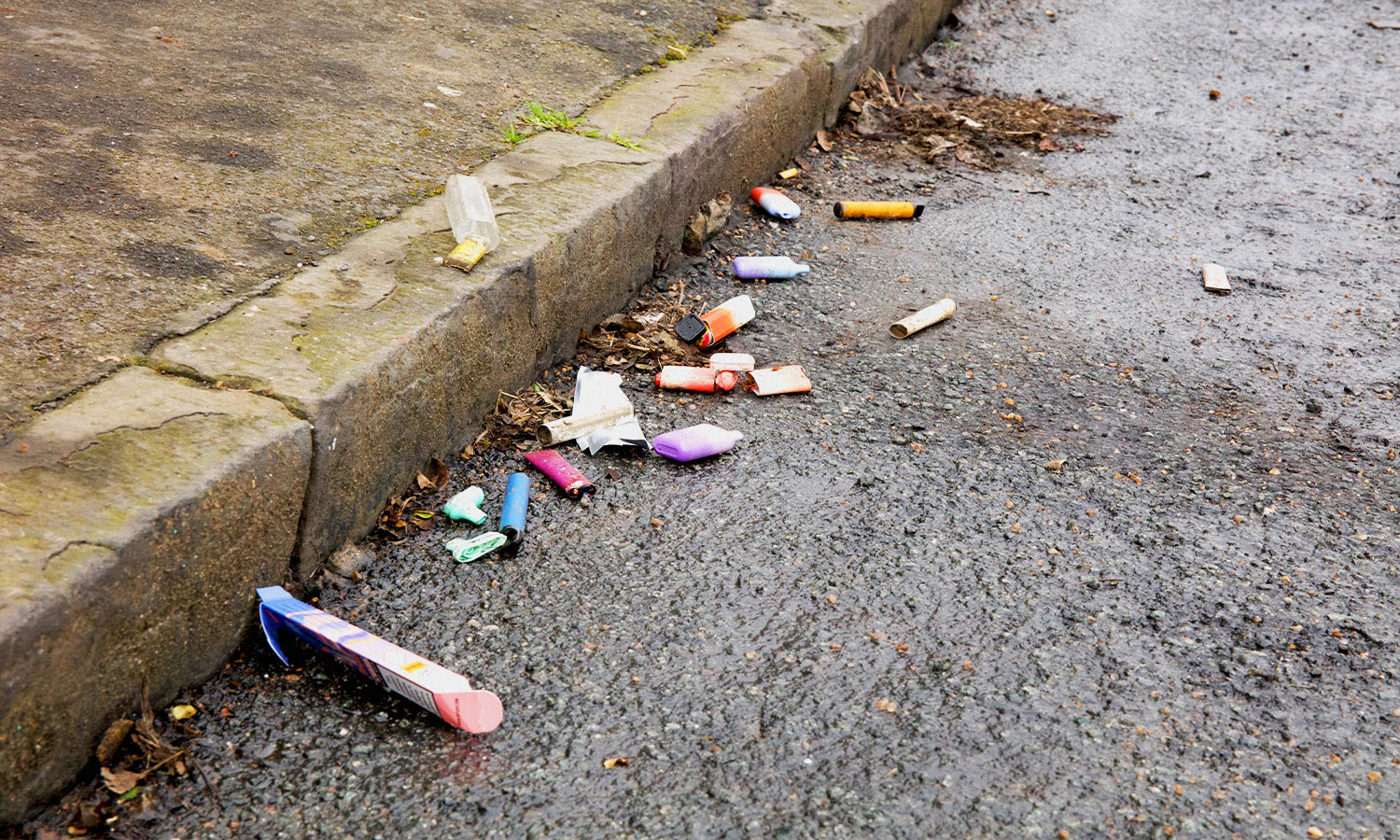AMA argues vapes are a 'triple threat'
Kristin Murdock
23 June 2024, 7:40 AM
 Vapes are not only bad for you, they are bad for the environment as well. (Image: New Scientist)
Vapes are not only bad for you, they are bad for the environment as well. (Image: New Scientist)Between 2019 and 2023, the daily tobacco smoking rate in NSW dropped from 11 per cent to 8.3 per cent.
While this is greats news, another insidious smoking habit more than tripled.
Vaping.
The Australian Medical Association (AMA) is ramping up its calls to government to rein in vaping rates around the country.
In early 2024, new regulations on vapes and electronic cigarettes came into effect which will hopefully cause a slowdown to these alarming statistics. These include restrictions on the importation of vapes (including those that do not contain nicotine), except for therapeutic purposes, such as tobacco smoking cessation and nicotine dependence.
With the National Senate soon to consider further vaping reforms, the AMA is urging all members of parliament to consider the health of the community and the environmental impact of vaping.
“If you care about the health of our children, and the health of our environment, then the choice is clear on vaping – support the reforms before the parliament,” AMA President Professor Steve Robson said. “Anything less is a betrayal of a healthier, safer and cleaner future for our kids."
The Therapeutic Goods and Other Legislation Amendment (Vaping Reforms) Bill 2024 is currently before Parliament.

If passed, the Bill will introduce a single consistent framework that applies nationally to regulate the importation, domestic manufacture, supply, commercial possession and advertisement of all vapes.
More than 21,000 people across the country took part in the latest National Drug Strategy Household Survey, held in 2022 and 2023. Results showed what has changed in the smoking landscape over the past 20 years. It is clear that it is primarily our young people who are taking up this new vaping habit.
Between 2019 and 2022–2023, the use of ‘e‑cigarettes’ in Australia rose substantially, particularly among young people. While current use of e‑cigarettes among people aged 14 and over nearly tripled between 2019 (2.5%) and 2022–2023 (7%), it quadrupled among people aged 18–24 (from 5.3% to 21%) and increased more than five-fold among people aged 14–17 (from 1.8% to 9.7%).
In contrast, only 1.6% of people aged 60–69 currently used e‑cigarettes in 2022–2023, and just 0.4% of people 70 and over were using them. This is the opposite pattern to tobacco smoking, which was more common among older people.
Findings pinpointed that young people were most likely to use them out of curiosity, or because they thought that e‑cigarettes taste better than regular cigarettes, while older people were most likely to use them to help them quit smoking.
Vapes a "triple threat"
Professor Robson said vapes are an “environmental triple-threat” with plastic waste in the device body and pod, electronic waste in the form of lithium-ion batteries and a heating element, and hazardous waste due to the heavy metals in the vape and nicotine in the e-juice.
“Vapes are classified as hazardous waste around the country but most vapes are being thrown away in the garbage, or worse – dumped as litter – which is terrible for the environment,” Professor Robson said. “The plastic waste from the device body and pod never fully decomposes.
“Rather than decomposing, plastic turns into microplastics, or tiny pieces of plastic, which continue to pollute the environment and pollute our food and drinking water. The electronic waste or lithium-ion battery waste can corrode and the metals and chemicals – like lithium – leak into the ground, polluting the soil and water long into the future.

Not so disposable. Vape waste is a looming environmental issue. IMAGE: The Latch
Professor Robson said that incorrectly disposed batteries can also cause fires in garbage trucks and landfills, which can harm people, animals and the land.
“We know liquid nicotine is also an acute hazardous waste that is toxic to humans if consumed.”
The Australian Lung Foundation is among many other health focussed entities who agree with this sentiment, stating that -
"The waste from vapes pollutes our land and waterways with toxic chemicals, heavy metals and microplastics. You can help protect our land and waterways.
"Vapes are devices made of plastics that do not biodegrade. These plastics build up in our land and waterways as they take hundreds of years to break down."
Under current NSW law, people cannot use e-cigarettes in smoke-free areas under the Smoke-free Environment Act 2000. They can use e-cigarettes where smoking is not banned.
The AMA said material used to make vapes also comes at a cost to the environment with deforestation and destruction of habitats from mining for materials and carbon emissions from their manufacture and transport.
The survey also found the use of e‑cigarettes is more likely than smoking in areas more socioeconomic advantage.
“Anyone in parliament who is serious about looking after the environment cannot turn a blind eye to the environmental menace that vapes have become,” Professor Robson said.



